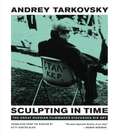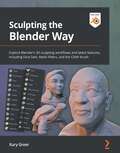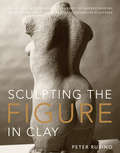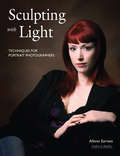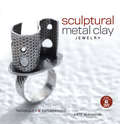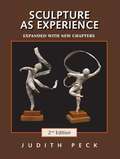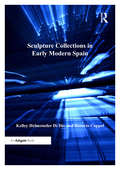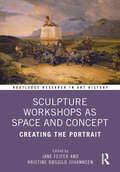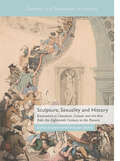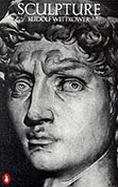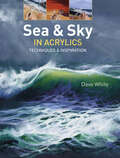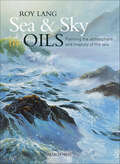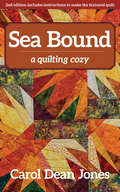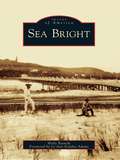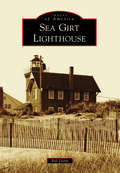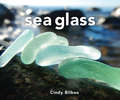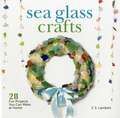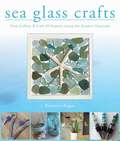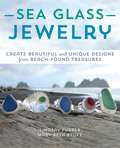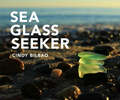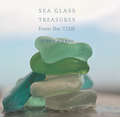- Table View
- List View
Sculpting in Time: Reflections on the Cinema
by Andrey Tarkovsky Kitty Hunter-BlairAndrey Tarkovsky, the genius of modern Russian cinema—hailed by Ingmar Bergman as "the most important director of our time"—died an exile in Paris in December 1986. In Sculpting in Time, he has left his artistic testament, a remarkable revelation of both his life and work. Since Ivan's Childhood won the Golden Lion at the Venice Film Festival in 1962, the visionary quality and totally original and haunting imagery of Tarkovsky's films have captivated serious movie audiences all over the world, who see in his work a continuation of the great literary traditions of nineteenth-century Russia. Many critics have tried to interpret his intensely personal vision, but he himself always remained inaccessible. In Sculpting in Time, Tarkovsky sets down his thoughts and his memories, revealing for the first time the original inspirations for his extraordinary films—Ivan's Childhood, Andrey Rublyov, Solaris, The Mirror, Stalker, Nostalgia, and The Sacrifice. He discusses their history and his methods of work, he explores the many problems of visual creativity, and he sets forth the deeply autobiographical content of part of his oeuvre—most fascinatingly in The Mirror and Nostalgia. The closing chapter on The Sacrifice, dictated in the last weeks of Tarkovsky's life, makes the book essential reading for those who already know or who are just discovering his magnificent work.
Sculpting the Blender Way: Explore Blender's 3D sculpting workflows and latest features, including Face Sets, Mesh Filters, and the Cloth brush
by Xury GreerGet started with the latest sculpting features in Blender 3D and learn key sculpting workflows such as Dynotopo, Voxel Remesher, QuadriFlow, and MultiresolutionKey FeaturesUse Blender's core sculpting workflows: basic sculpting, Dynotopo, Voxel Remesher, QuadriFlow, and MultiresolutionLearn how to use and customize Blender's sculpting brushes to create fantastic art effortlesslyExplore common techniques in Blender 3.0 for creating facial features, clothing, accessories, and moreBook DescriptionBlender 3D is a free and open source program that can be used for every part of the 3D production pipeline. It has several robust feature sets for creating 3D art that have contributed to its rising popularity in the last few years. Sculpting is perhaps the most enjoyable and artistic method for creating 3D art as it relies less on technical knowledge and focuses on artistic brushes. The latest release of Blender makes the sculpting feature set more powerful than ever, so now is an excellent time to learn it! This book covers the expansive list of features in the Blender 2.93 LTS release, as well as the exciting all-new Blender 3.0 release. This book will be an excellent resource for professionals who need a production-ready long-term support release of the software, as well as hobbyists looking for a cutting-edge experience.Sculpting the Blender Way will demonstrate how to navigate Blender's user interface and take you through the core workflows. You'll gain a detailed understanding of how the sculpting features work, including basic sculpting, Dyntopo, the Voxel Remesher, QuadriFlow, and Multiresolution. This Blender book will cover a wide range of brushes, as well as all of the latest additions to the sculpting feature set, such as Face Sets, Mesh Filters, and the Cloth brush. You'll learn how to customize these brushes and features to create fantastic 3D sculptures that you can share with the ever-growing Blender community.By the end of this book, you'll have gained a complete understanding of the core sculpting workflows and be able to use Blender to bring your digital characters to life.What you will learnConfigure your graphics tablet for use in 3D sculptingSet up Blender's user interface for sculptingUnderstand the core sculpting workflowsGet the hang of using Blender's basic sculpting brushesCustomize brushes for more advanced workflowsExplore high-resolution details with brush alphas and MultiresolutionTry out the all-new Cloth brushRender your finished artwork for your portfolioWho this book is forThis book is for artists who want to get started with the exciting new sculpting features in Blender 3D. Whether you have experience using ZBrush or traditional sculpting, or are completely new to sculpting, this book will have something new for you to learn. Prior experience with Blender or other 3D software may be helpful but is not required. However, a graphics tablet from Wacom, XP-Pen, or Huion is highly recommended to be able to follow along the concepts and examples covered in the book.
Sculpting the Figure in Clay: An Artistic and Technical Journey to Understanding the Creative and Dynamic Forces in Figurative Sculpture
by Peter RubinoA comprehensive guide for sculptors looking to recreate the human body using clay, from the author of The Portrait in ClayIn Sculpting the Figure in Clay, acclaimed portrait bust sculptor Peter Rubio teaches a master class in the essentials of figurative sculpture. In this intensive, all-inclusive guide, he introduces students to a natural, straightforward geometry that will help them become masters at forming figures of clay. Rubino&’s unique approach utilizes a geometric system consisting of blocks, simple shapes, and guidelines that instruct students in a new and instinctive sculptural style, With these easy-to-follow instructions and informative concepts, students will see figures as the basic shapes beneath the form as well as learn vital approaches such as BLT: Bend, Lean, and Turn, to create evocative expression, and the Three Ps: Position, Proportion, and Plans, for accurate representation. Other topics include:• The Fundamentals of the Clay Torso• Observing the Model• Essential Materials and Tools• Sculpting the Female Torso from the Live Model• Sculpting the Reclining Figure from the Live Model• Sculpting the Hand, Foot, and Lower Arm• Plus Many Photographic Reference Poses for Continued Study This unparalleled resource is the definitive guide to figurative sculpture.
Sculpting with Light
by Allison EarnestTechniques for creating flawless lighting show photographers of all levels how to take full control of their photographic atmosphere in this indispensable guide. Illustrating the physics that govern light; the visual difference between the eye and camera; the qualities of incident and reflected light; and the effects of the size, intensity, direction, contrast, and ratio of light, this manual offers tools for sculpting the face for remarkable portraits. The three desirable positions for the main light are described in detail, as well as how to use those arrangements to accentuate all types of faces-oval, long, angular, heart-shaped, and square-to create portraits with a variety of different effects, from romantic to edgy to high fashion.
Sculptural Metal Clay Jewelry: Techniques and Explorations
by Kate MckinnonBeginning with an overview of the properties of metal clay, including safety information and metalsmithing terms, this thorough resource offers detailed procedures for creating a variety of components, settings, findings, attachments, 3-D forms, and textured effects. Each technique is shown with step-by-step photography to make it easy for jewelry makers at the advanced beginner to intermediate levels to learn the art of metal clay. The 12 unique projects within have multiple components made from metal clay, including clasps, chains, and settings; moveable and removable pieces; unusual textures and patinas; and unique construction and engineering. Creative tips on incorporating beads are also included. This handbook offers jewelry artists the design inspiration needed to create gallery-level pieces that are truly wearable art.
Sculpture As Experience
by Judith PeckSculpture as Experience 2nd Editionexplores the freedoms and possibilities inherent in sculpture. Beginning with exercises in seeing and drawing for beginners and experienced artists alike, Dr. Judith Peck goes on to describe different approaches to creating sculpture, including both aesthetic and practical methods for working with a wide range of media. The expanded second edition includes: Six new chapters devoted to paper productions, foam core fabrications, wood constructions, sand sculpture, project preservations and patina, and mounting 200 color photos to encourage individual creativity and provide inspiration In-depth instructions demonstrating techniques for working with found objects, clay, foil and pariscraft, wax, wire, plaster and cement and vermiculite Checklists of tools and materials needed for each medium and technique Generously illustrated in color with student work and the author's own art,Sculpture as Experience 2nd Editionwill broaden the definition of what sculpture is and help the individual sculptor find his or her medium.
Sculpture Collections in Early Modern Spain
by Kelley Helmstutler Dio Rosario CoppelIn the past decade, there has been a surge of Anglophone scholarship regarding Spain in the sixteenth and seventeenth centuries, which has led to a reframing of the discourses around Spanish culture of this period. Despite this new interest-in which painting, in particular, has been singled out for treatment-a comprehensive study of sculpture collections and the status of sculpture in Spain has yet to be produced. Sculpture Collections in Early Modern Spain is the first book to assess the phenomenon of sculpture collecting and in doing so, it alters the previously held notion that Spanish society placed little value in this art form. Di Dio and Coppel reveal that, due to the problems and expense of their transport from Italy, sculptures were in fact status symbols in the culture. Thus they were an important component of the collections formed by the royal family, cultivated noble collectors, humanists, and artists who had pretensions of high status. This book is especially useful to specialists for its discussion of the typologies of collections and objects, and of the mechanics of state gifts, transport, and collection display in this period. An appendix presents extensive archival documentation, most of which has never before been published. The authors have uncovered hundreds of new documents about sculpture in Spain; and new documentary evidence allows them to propose several new identifications and attributions. Firmly grounded in extensive archival research, Sculpture Collections in Early Modern Spain redefines the socio-political and art historical importance of sculpture in early modern Spain. Most importantly, it entirely transforms our knowledge regarding the presence of sculpture in a wide range of Spanish collections of the period, which until now has been erroneously characterized as close to non-existent.
Sculpture Workshops as Space and Concept: Creating the Portrait (Routledge Research in Art History)
by Jane FejferThis book explores the multifaceted aspects of sculptor’s workshops from the Renaissance to the early nineteenth century. Contributors take a fresh look at the sculptor’s workshop as both a physical and discursive space. By studying some of the most prominent artists’ sculptural practices, the workshop appears as a multifaced, sociable and practical space. The book creates a narrative in which the sculptural workshop appears as a working laboratory where new measuring techniques, new materials and new instruments were tested and became part of the lived experience of the artist and central to the works coming into being. Artists covered include Donatello, Roubilliac, Thorvaldsen, Canova, and Christian Daniel Rauch. The book will be of interest to scholars studying art history, sculpture, artist workshops, and European studies.
Sculpture and Social Dynamics in Preclassic Mesoamerica
by Julia GuernseyThis book examines the functions of sculpture during the Preclassic period in Mesoamerica and its significance in statements of social identity. Julia Guernsey situates the origins and evolution of monumental stone sculpture within a broader social and political context and demonstrates the role that such sculpture played in creating and institutionalizing social hierarchies. This book focuses specifically on an enigmatic type of public, monumental sculpture known as the "potbelly" that traces its antecedents to earlier, small domestic ritual objects and ceramic figurines. The cessation of domestic rituals involving ceramic figurines along the Pacific slope coincided not only with the creation of the first monumental potbelly sculptures, but with the rise of the first state-level societies in Mesoamerica by the advent of the Late Preclassic period. The potbellies became central to the physical representation of new forms of social identity and expressions of political authority during this time of dramatic change.
Sculpture as Experience
by Judith PeckSculpture as Experience 2nd Edition explores the freedoms and possibilities inherent in sculpture. Beginning with exercises in seeing and drawing for beginners and experienced artists alike, Dr. Judith Peck goes on to describe different approaches to creating sculpture, including both aesthetic and practical methods for working with a wide range of media. The expanded second edition includes: Six new chapters devoted to paper productions, foam core fabrications, wood constructions, sand sculpture, project preservations and patina, and mounting 200 color photos to encourage individual creativity and provide inspiration In-depth instructions demonstrating techniques for working with found objects, clay, foil and pariscraft, wax, wire, plaster and cement and vermiculite Checklists of tools and materials needed for each medium and technique Generously illustrated in color with student work and the author's own art, Sculpture as Experience 2nd Edition will broaden the definition of what sculpture is and help the individual sculptor find his or her medium.
Sculpture, Sexuality and History: Encounters in Literature, Culture and the Arts from the Eighteenth Century to the Present (Genders and Sexualities in History)
by Jana Funke Jen GroveThis book investigates the wide-ranging connections between sculpture, sexuality, and history in Western culture from the eighteenth century to the present. Sculpture has offered a privileged site for the articulation of sexual experience and the formation of sexual knowledge. As historical objects, sculptures also draw attention to the different ways in which knowledge about sexuality is facilitated through an engagement with the past. Bringing together contributors from across disciplines, including art history, classics, film studies, gender studies, history, literary studies, museum studies, queer theory and reception studies, the volume presents original readings of sculptural art in relation to antiquarianism, aesthetics, collecting cultures, censorship and obscenity, psychoanalysis, sexology, and the experience and regulation of museum spaces. It examines how sculptural encounters were imagined and articulated in literature, painting, film and science. As a whole, the book opens up a new understanding of the ways in which sculptures, as real or imagined objects, have fundamentally shaped approaches to and receptions of the past in relation to sex, gender and sexuality.Chapters 8 and 10 of this book are available open access under a CC BY 4.0 license at link.springer.com.
Sculpture: Processes and Principles
by Rudolf WittkowerThis book studies what unites and separates sculptors across the centuries. It looks at the masters of Archaic Greece, the Middle Ages, through the great names of Michelangelo, Cellini and Bernini to Rodin, Brancusi and Henry Moore. By studying their working methods and techniques, the author discloses their artistic ideas and convictions, thereby opening up new avenues of approach for the spectator.
Se faire de l’argent chaque jour en collectionnant des objets faciles à trouver
by Bernard Levine Houndegla OndineDans ce unique recueil amusant, vous découvrirez plusieurs choses à collectionner et qui vous procuront un grand plaisir comme la collecte de disques Rock and Roll, les jouets de Fast foods, les ours en peluches, les timbres, les pièces de monnaies, les vieilles machines à écrire, les appareils photo, les jeux informatiques, les bandes dessinées, les stylos de fontaine, les coquilles de mer, les imprimés de baseball sur les cartes, les cartes, les autographes, les cartes postales, les cannettes de bière,les partitions, les cuillères à thé et tellement plus encore.
Sea & Sky in Acrylics: Techniques & Inspiration
by Dave WhiteA pro shares his techniques for painting stunning seascapes, with three step-by-step projects included.Painting teacher Dave White introduces the simple but effective techniques that he uses to paint stunning, dramatic seascapes with beautiful and realistic skies. He demonstrates spattering, blending backgrounds, painting horizons, finger painting clouds and foam. There is expert advice on the anatomy of waves and how they rise and collapse, creating ripples, surf, foam, and spray. In addition, clear instructions show how to paint effective reflections and beaches to improve your seascapes. The sky section shows effective techniques for painting all types of cloud, with some innovative methods such as tipping up the surface to let dilute paint run, to create cirrus clouds. Dave’s method of creating depth in sea, beach, and sky using lines projected from the vanishing point can radically improve your seascapes. You’ll also find a section on moods and sunsets, full of beautiful, dramatic examples. Finally, three step-by-step projects show how to paint a beach panorama with a rolling wave, a spectacular sunset over a calm sea, and waves crashing on rocks.
Sea & Sky in Oils: Painting the Atmosphere and Majesty of the Sea
by Roy LangExpert author Revamped design of a classic, much in demand over many Covers all aspects of working with oils and painting the sea Virtually no competition
Sea Bound: A Quilting Cozy
by Carol Dean JonesA retired widow takes a quilting cruise with friends—and proves herself a crafty amateur sleuth…A mystery with a bonus pattern included! Sarah Miller has become a crafty sort ever since she moved into Cunningham Village, and made some great new friends among the retirement community&’s active seniors. And much to her surprise as she nears her seventieth birthday, she even has a boyfriend. She also volunteers at the nearby nursing home, bringing a bit of cheer to neighbors who need it. Now she&’s taking a break with her friends and going on a quilting cruise. But when she discovers a mystery involving a gambling debt gone bad and a missing passenger presumed dead, she&’s feeling a bit at sea…
Sea Bright
by Holly Bianchi Jo-Ann Kalaka-AdamsIn the mid-1800s, a quaint fishing village, called Nauvoo at the time, was the largest fishery on the New Jersey seacoast. By the end of the 19th century, this fishing village had grown into the flourishing seaside resort of Sea Bright. Luxurious hotels like the Normandie-by-the-Sea, Sea Bright Inn, and the Octagon House were built, transforming the town into a haven for the wealthy, who built elegant cottages along its coast. The famous Pannaci Hotel and Restaurant became known as the "Delmonico of Sea Bright." Today Sea Bright continues to draw vacationers and residents alike with its glistening water and beautiful sandy beaches.
Sea Girt Lighthouse: The Community Beacon (Images of America)
by Bill DunnIn the New Jersey shore community of Sea Girt, where Commodore Robert Stockton's oceanfront mansion had a porch as long as a ship's deck from which he surveyed the waters, a lighthouse was built in 1896. Sea Girt Lighthouse illuminated a dark space, providing a crucial guiding light to passing ships. The station would become a lighthouse of distinction and innovation. In 1920, it was the first land-based lighthouse with a radio beacon transmitter, enabling ships to navigate through fog. During World War II, the Coast Guard extinguished the light, stood watch in the tower, and patrolled the beaches. No matter the mission, the lighthouse met every challenge. In 1956, the town acquired the decommissioned lighthouse, making it the library and recreation center. By 1981, however, the building needed extensive repairs and was at risk of being sold. Concerned residents formed the Sea Girt Lighthouse Citizens Committee to "save our lighthouse." And they did, restoring it, preserving its history, and keeping it busy with community events.
Sea Glass (Revised and Updated)
by Cindy BilbaoOver 100 photographs celebrate the simple beauty of sea glass. Most of us have fond memories of collecting sea glass at the beach. The joy of discovery is timeless. The smooth, patinated surfaces of these jewels are a testament to the power of the sea. Man-made objects such as bottles are broken, rolled, and tumbled by the waves, transformed into new, almost natural treasures. Photographer Cindy Bilbao captures the natural beauty of this found art in a collectible volume essential for any sea glass lover.
Sea Glass Chronicles
by C. S. LambertLeads the reader through the worlds between the tides, with tales of the origins of each shard, whether glass or ceramic.
Sea Glass Crafts: 28 Fun Projects You Can Make at Home
by C. S. LambertSea glass connects civilization and nature, often in surprising ways. And collecting sea glass and pottery shards is more popular than ever. However, beyond simply admiring their beauty, many collectors are at a loss as to just what to do with their collections. Sea Glass Crafts is filled with ideas to turn your seaside treasures into home decor--inside and out, practical and decorative, whimsical and serious. From a sea glass chandelier to a shower curtain, or a sea glass wreath to a shadowbox, sea glass expert Carole Lambert covers thirty fun and beautiful projects. Step by step directions, explanations of everything you'll need, and color photographs accompany each project. Sea Glass Crafts is the perfect book for anyone fascinated by these jewels from the sea.
Sea Glass Crafts: Find, Collect, & Craft More Than 20 Projects Using the Ocean's Treasures
by Rebecca Ruger WightmanSea glass is the beautiful result of broken glass being naturally polished and smoothed by the ocean’s currents for extended periods of time. These beautiful jewels become weathered and frosted from abrasion and erosion in salt water, giving them a distinctly beautiful, jewel-like appearance that is perfect for all sorts of crafting! Sea Glass Crafts includes twenty step-by-step projects for you to create beautiful works with your collection of sea glass. Accompanying each project are beautiful full-color photographs which visually aid readers in the instructions as well as display the finished product. From jewelry to other lavish lifestyle crafts, this book will give skills needed to learn the art of creating beautiful homemade pieces. Sea glass can be purchased in bulk online, but it is way more fun to collect on your own. On your next trip to the beach, when you find yourself swimming in these treasures, be sure to utilize the lessons in this book to create something truly homemade, unique, and beautiful. It’s a perfect activity for anyone interested in jewelry-making or crafting, or for someone looking to learn a new hobby.
Sea Glass Jewelry: Create Beautiful and Unique Designs from Beach-Found Treasures
by Lindsay Furber Mary Beth BeukeDiscover how to create stunning jewelry using sea glass found on the beach.GIFTS FROM THE SEAGather beautiful beach glass with its mysterious ocean-tumbled shapes and rainbow of bright hues. Add your personal creativity and some basic jewelry making techniques. Enjoy your stunning, wearable, one-of-a-kind keepsakes!With gorgeous color photographs and step-by-step instructions, this book teaches the essential skills, like drilling glass, wire wrapping, and texturing metal, to turn your beach-found bounty into attractive accessories, including:Adorable braceletsStylish pendantsSparkly earringsEye-catching rings
Sea Glass Seeker (Revised and Updated): 6 Pack
by Cindy BilbaoTransform your day at the beach into a passionate treasure hunt. Sea glass—shards of old glass that have been shaped and polished by the waves—can be found in a wide array of colors and can be simply collected or made into gorgeous jewelry. Seeking Sea Glass will open up a new world for those on the hunt for these unique treasures, teaching you where to go, when to go, what to look for, and more. This unique guide is beautifully illustrated with Cindy Bilbao's photographs capturing the magic of sea glass.
Sea Glass Treasures from the Tide
by Cindy BilbaoWe may never find message in a bottle, but most of us have fond memories of collecting beach glass. Let the images captured in Treasures from the Tide bring you back to a simpler time and the joy of discovery. This unique photo keepsake celebrates the simple beauty of found objects. Beaches remind us of simple pleasures--swimming in the surf, building sand castles, and collecting smooth, opalescent beach glass. These once man-made objects, perhaps glass bottles or insulators, were broken, rolled and tumbled by the waves, and smoothed into something completely different, something--almost--natural again. Beach glass is found art. Why we take such pleasure in these bits and pieces of manufactured materials reclaimed by nature may be something to contemplate while enjoying Treasures from the Tide--the author surely has, and she conveys that pleasure in playful, organic sculptures that come to life in the interplay of colors and shapes and their interaction with the sand and surf they came from. The sense of a moment in time captured in these photos is like an insect captured in amber, and, in this book, beach glass becomes just as precious.
